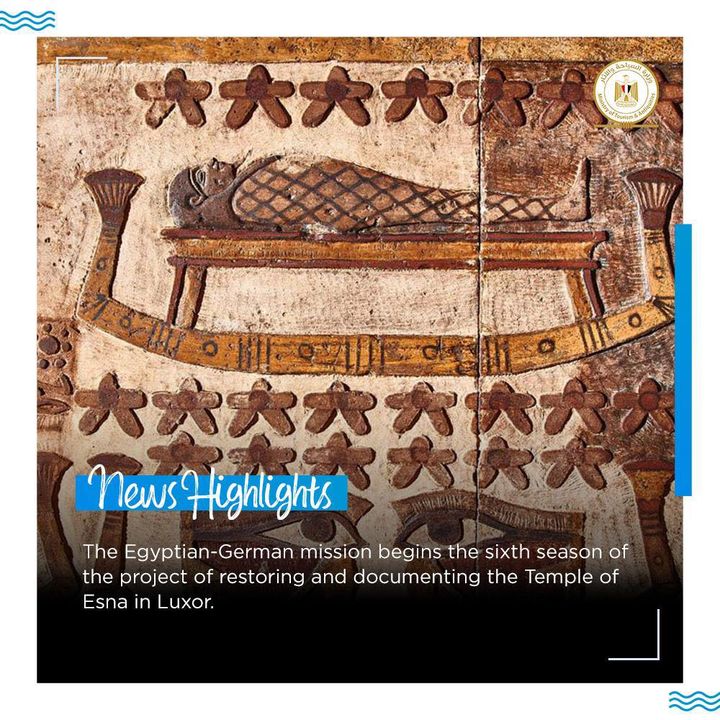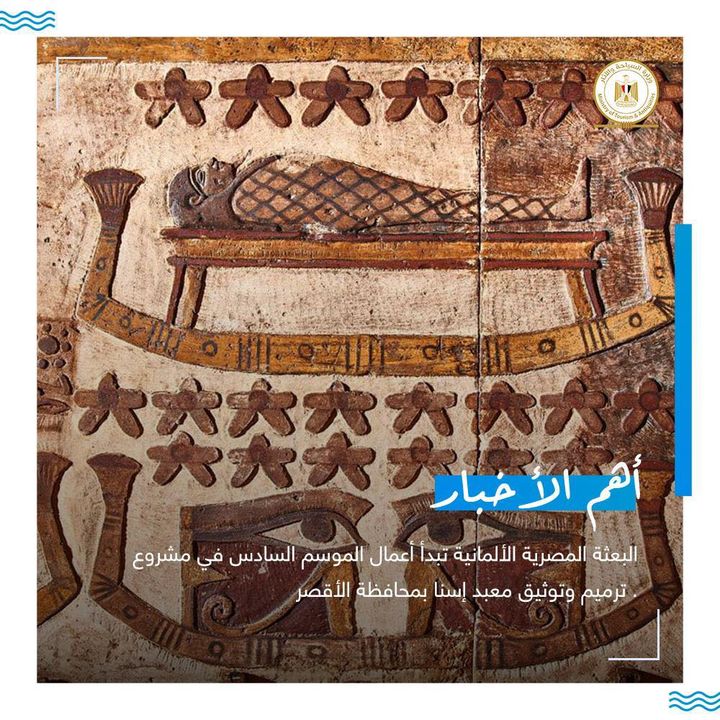وأوضح الدكتور هشام الليثي رئيس مركز تسجيل الآثار ورئيس البعثة من الجانب المصري، أن أعمال البعثة هذا الموسم أشتملت على أعمال ترميم وتنظيف طبقات السناج والاتساخات وإزالة الأملاح من جدران وسقف المعبد وإظهار الألوان الأصلية للنقوش، خاصة النقوش الفلكية التي تزين سقف المعبد، والتي سبق وتمكن فريق الترميم من إظهار جزء كبير منها خلال أعمال المواسم السابقة.
وأشار إلى أنه من المقرر أن تستمر أعمال هذا الموسم حتى الشهور الأولى من عام ٢٠٢١م.
وأوضح الدكتور كريستيان لايتس رئيس البعثة من الجانب الألماني، أن نقوش المعبد الملونه عانت على مر القرون من تجمع طبقات سميكة من السناج والأتربة والاتساخات، بالإضافة إلى مخلفات الطيور والوطاويط، وعشش العناكب وكذلك تكلسات الأملاح.
جدير بالذكر أن معبد إسنا يقع على بعد حوالي ١٠٠ متراً من الضفة الغربية للنيل بمدينة إسنا، ويعود تاريخه إلى العصر الروماني؛ حيث بدأ إنشاءه في عصر الإمبراطور الروماني كلاوديوس في القرن الأول الميلادي، وإنتهى تزينه بالنقوش في عصر الإمبراطور ديسيوس بين عامي ٢٥١-٢٤٩. وكُرس المعبد للإله خنوم في هيئة الكبش، ومعه زوجتيه.
وقد عانى خلال القرنين التاسع عشر والعشرين من الزحف العمراني، فشيدت المنازل من حوله، حتى إن منزلا بُني أمام مدخله مباشرةً متحكما في حركة الخروج والدخول من وإلى المعبد، كما استُخدم في عصر محمد على باشا مخزنًا للقطن.
The joint Egyptian-German mission between the Antiquities Registration Center of the Ministry of Tourism and Antiquities, and the Egyptology Department at the University of Tübingen, Germany, started the sixth season of the project of restoring and documenting the Esna Temple in Luxor.
Dr. Hisham El Laithy, head of the Antiquities Registration Center and head of the mission from the Egyptian side, explained that the mission’s work this season includes restoration work and cleaning the layers of soot and dirt, removing salts from the walls and ceiling of the temple and enhancing the original colors of the inscriptions, especially the astronomical inscriptions that adorn the roof of the temple. The restoration was partly to show during the previous seasons.
He indicated that this season’s work will continue until the beginning of 2021.
Dr. Christian Lights, head of the mission from the German side, explained that the colorful temple inscriptions have suffered over the centuries from the gathering of thick layers of soot, dust and dirt, in addition to the remains of birds and bats, spider nests, as well as salt deposits.
It is worth noting that the Temple of Esna is located about 100 meters from the west bank of the Nile in the city of Esna, and dates back to the Roman era. Its construction began in the era of the Roman Emperor Claudius in the first century AD, and ended with inscriptions in the era of Emperor Decius between the years 251-249. The temple was dedicated to the god Khnum in the form of a ram, and with him his two wives.
During the nineteenth and twentieth centuries, it suffered from urban sprawl, and houses were built around it, so that a house was built directly in front of its entrance, controlling the movement of exit and entry to and from the temple, as it was used in the era of Muhammad Ali Pasha as a storeroom for cotton.

